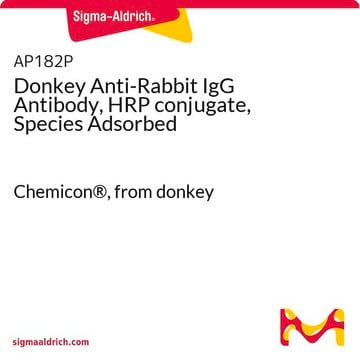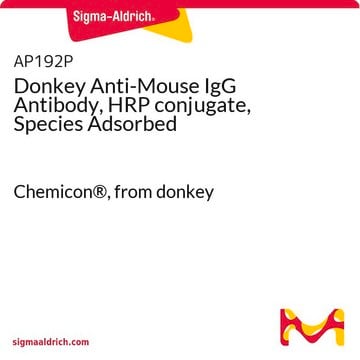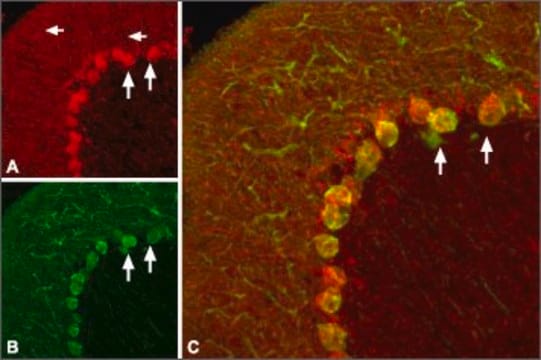GF35L
Anti-BDNF Mouse mAb (35928.11)
lyophilized, clone 35928.11, Calbiochem®
Synonym(s):
Anti-Brain Derived Neurotrophic Factor
About This Item
Recommended Products
biological source
mouse
Quality Level
antibody form
affinity isolated antibody
antibody product type
primary antibodies
clone
35928.11, monoclonal
form
lyophilized
does not contain
preservative
species reactivity
human
manufacturer/tradename
Calbiochem®
storage condition
OK to freeze
avoid repeated freeze/thaw cycles
isotype
IgG1
shipped in
ambient
storage temp.
−20°C
target post-translational modification
unmodified
Gene Information
human ... BDNF(627)
General description
Immunogen
Application
Immunoblotting (1-2 µg/ml)
Immunohistochemistry (5-15 µg/ml)
Neutralization Studies (see comments)
Warning
Physical form
Reconstitution
Other Notes
Sendtner, M., et al. 1996. Neurochem. Res.21, 831.
Barbacid, M. 1995. Ann. N.Y. Acad. Sci.766, 442.
Gotz, R., et al. 1994. Nature372, 266.
Snider, W.D. 1994. Cell77, 627.
Snider, W.D., et al. 1992. J. Neurobiol.23, 1231.
Legal Information
Not finding the right product?
Try our Product Selector Tool.
Storage Class Code
11 - Combustible Solids
WGK
WGK 1
Flash Point(F)
Not applicable
Flash Point(C)
Not applicable
Certificates of Analysis (COA)
Search for Certificates of Analysis (COA) by entering the products Lot/Batch Number. Lot and Batch Numbers can be found on a product’s label following the words ‘Lot’ or ‘Batch’.
Already Own This Product?
Find documentation for the products that you have recently purchased in the Document Library.
Our team of scientists has experience in all areas of research including Life Science, Material Science, Chemical Synthesis, Chromatography, Analytical and many others.
Contact Technical Service







